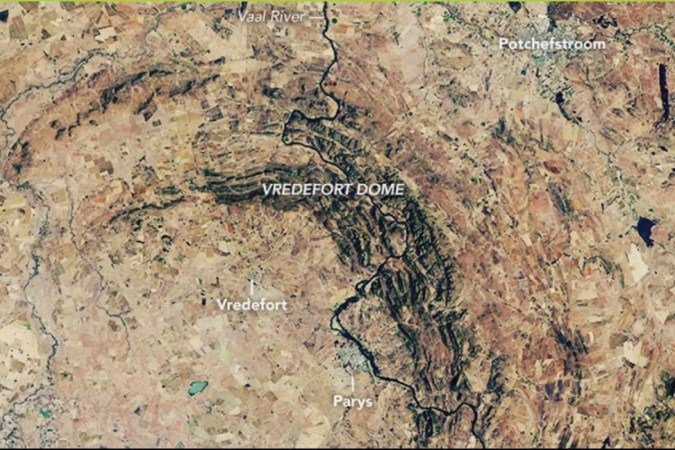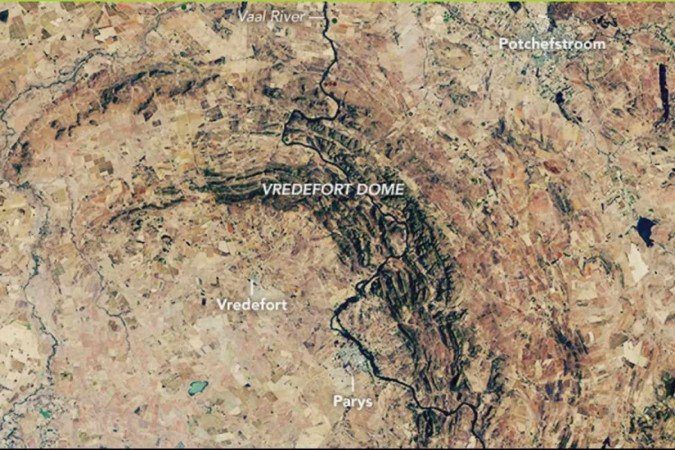The largest asteroid hitting Earth was 25 kilometers wide
2 min read

Published on 03/10/2022 14:18

(Credit: Lauren Dauphin, using Landsat data from the USGS.)
Before trees existed, when the Earth was inhabited only by single-celled organisms, the largest asteroid to hit our planet crashed near what we now know as Johannesburg, South Africa, forming the Fredford crater. information from IFL Science.
With an estimated crater size between 250 and 280 kilometers after the first impact, the asteroid’s size was originally calculated to be about 15 kilometers in diameter. However, new research from the University of Rochester indicates that the recalculated size is closer to 25 kilometres.
The team used a collision physics program called Simplified Arbitrary Langrangean Eulerian (iSALE) to calculate the asteroid size needed to create an impact at the Vredefort scale.
They found that the original diameter estimate would result in an impact site measurement of about 172 kilometres. To get to the actual figure of 250-280 kilometers, the impact would have to be much greater.
Estimates of the impact this effect might have on the Earth’s environment can be drawn from what we already know about the consequences of the Chicxulub effect.
As the cause of the mass extinction of the dinosaurs, the Chicxulub crater was created by a 10-kilometre asteroid that destroyed 75% of the plant and animal species on Earth 66 million years ago.
Fortunately for all living things, there wasn’t much around two billion years ago. Although not a cause of the mass extinction event, it is believed that the Vredefort effect could have a greater impact on global climate than the Chicxulub effect.
Large amounts of dust from an asteroid impact can block the sun, in a period of hours to decades. This could cause the Earth’s surface temperature to cool dramatically. When the dust settles, the carbon dioxide released by the impact can in turn cause the planet to warm by several degrees.
Impacts of this magnitude and time period are important to advance our understanding of the Earth’s geographic layout two billion years ago.
By studying the material ejected from the Vredeford crater, the researchers were able to match the samples with those collected from present-day Karelia in Russia. They estimated the distance of the two land masses to be about 2,000 to 2,500 km at the time of the collision.
In addition to helping to better understand what the planet looked like two billion years ago, information gathered from impacts of this size allows researchers to study the effects of other large planetary impacts and estimate potential impacts of the collision in the future.
(Image: NASA’s Earth Observatory)
The study was published in Journal of Geophysical Research: Planets.

“Devoted food specialist. General alcohol fanatic. Amateur explorer. Infuriatingly humble social media scholar. Analyst.”

